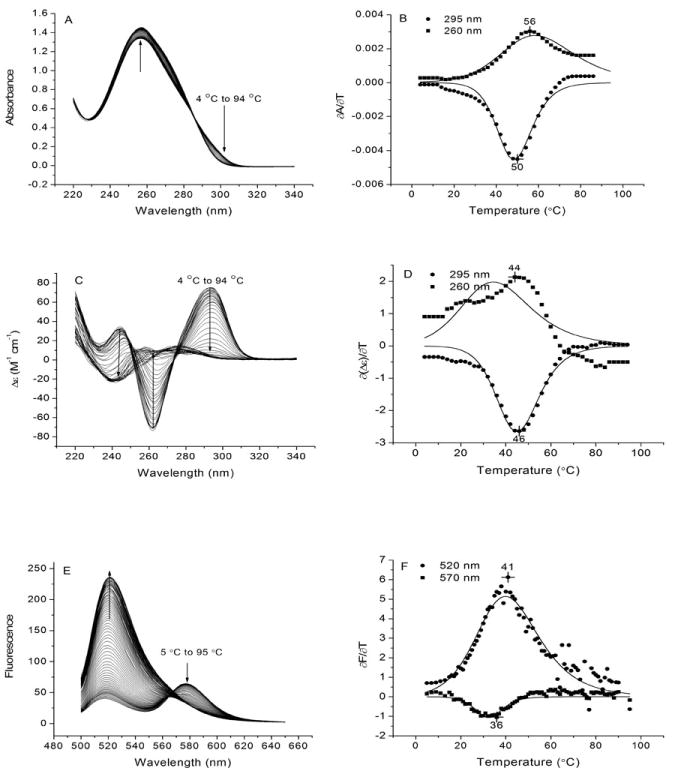Figure 3.

Temperature-dependence of the UV absorption, CD and FRET properties of the oligonucleotide d[A(GGGTTA)3] (143D) which forms a quadruplex structure in 50 mM NaCl. Panels A, C and E show spectroscopic measurements for each method as a function of increasing temperature. The arrows represent the direction of the signal change as the temperature is increased. Panels B, D and F compare the corresponding first derivative of the signal with respect to temperature at the indicated wavelengths. The points in Panels A, C & E were obtained from the raw data by smoothing with a 9-point, second order Savitzky-Golay filter prior to calculation of the first derivative using the program Origin 7.0. Each solid line in the derivative plot represents a non-linear least squares fit of the smoothed data points to a two-state F ↔ U mechanism described by Equation 1. Note that the data points are not well-represented by the two-state model. In addition, the apparent mid-point temperature as indicated by the number above the maximum or minimum of each curve depends both on the wavelength of observation as well as the method of measurement. Both of these factors indicate that the two-state model is unable to accurately describe the temperature-dependence of the optical signal. The absorbance and CD measurements were carried out with 143D and FRET measurements were carried out with 6-Fam-143D-Tamra. Conditions: 10 mM tetrabutyl ammonium phosphate, 50 mM NaCl, 1 mM EDTA, pH 7.0. Oligonucleotide concentrations were: 4.6 μM for the absorbance experiments, 4.7 μM for the CD experiments, and 0.1 μM for the fluorescence experiments.
